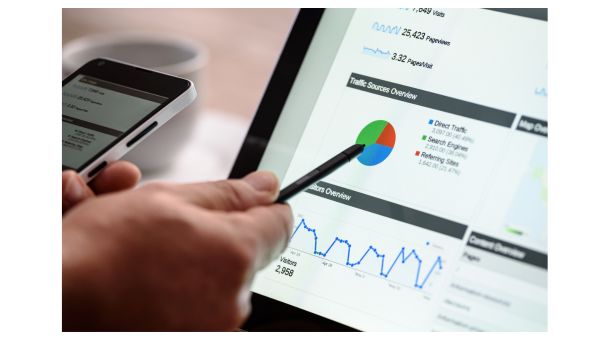Marketing is a crucial aspect of any business, and with the increasing competition in the digital age, businesses need to leverage every tool available to stay ahead of the curve. One such tool is the Marketo Google Ads integration. Marketo, a leading marketing automation platform, offers seamless integration with Google Ads, allowing businesses to streamline their marketing efforts and maximize their ROI.
In this article, we will explore the benefits of using Marketo Google Ads integration and provide a step-by-step guide on how to set it up. Additionally, we will discuss the key features of this integration, optimization strategies, common issues faced, and best practices for maximizing results. We will also discuss how Marketo Google Ads integration impacts your SEO strategy and how it can be used for remarketing campaigns.
To provide a comprehensive view, we have consulted with expert managers with extensive experience using Marketo Google Ads integration. Their insights and tips will help you maximize this integration and achieve your marketing goals. So, let’s dive in and explore how Marketo Google Ads integration can take your marketing efforts to the next level.
What is Marketo Google Ads integration and how does it work?

Marketo Google Ads integration is a powerful marketing automation tool enabling businesses to connect their Ads account with the Marketo marketing automation platform. This integration allows businesses to streamline their marketing efforts and optimize their Google Ads campaigns to maximize their return on investment (ROI).
How does it work?
The Marketo Google Ads integration works by synchronizing data between the two platforms. Marketo tracks a user’s activity and behavior when a user clicks on a Google Ads ad and lands on the business’s website. This data is then captured and synced with the user’s Marketo profile, creating a detailed view of their interaction with the business.
Marketo then uses this data to create targeted marketing campaigns that deliver personalized content to the user based on their behavior and interests. This allows businesses to create highly effective marketing campaigns tailored to their customer’s needs and preferences.
Furthermore, Marketo Google Ads integration also allows businesses to track and measure the effectiveness of their Google Ads campaigns directly from the Marketo platform. This provides a centralized view of all marketing efforts, enabling businesses to optimize their campaigns for better performance.
Overall, the Marketo Google Ads integration is a powerful tool that enables businesses to create highly targeted and effective marketing campaigns that maximize ROI. By connecting these two platforms, businesses can streamline their marketing efforts and achieve better results with less effort.
How to set up Marketo Google Ads integration: Step-by-step guide

Setting up Marketo Google Ads integration can initially seem daunting, but it is straightforward. Here is a step-by-step guide to help you set up Marketo Google Ads integration:
Step 1: Connect your Google Ads account to your Marketo instance
You need to generate a Google Ads API key to connect your Google Ads account to Marketo. To do this, follow these steps:
- Log in to your Google Ads account.
- Navigate to the “API Center” page.
- Click “Create a new project” and follow the prompts to create a new project.
- Generate an API key by clicking “Create credentials” and selecting “API key.”
- Copy the API key and save it in a secure location.
Next, you need to add your Google Ads account to Marketo. To do this, follow these steps:
- Log in to your Marketo instance.
- Navigate to “Admin” and select “Integrations.”
- Click “Add” and select “Google Ads.”
- Enter your Google Ads API key and click “Authenticate.”
- Follow the prompts to connect your Google Ads account to Marketo.
Step 2: Create a new Marketo program
To create a new Marketo program, follow these steps:
- Log in to your Marketo instance.
- Navigate to “Marketing Activities” and select “New Program.”
- Enter a name for your program and select “New Program Type.”
- Select “AdBridge” as your program type and click “Create.”
Step 3: Create a new AdBridge campaign
To create a new AdBridge campaign, follow these steps:
- Navigate to your new AdBridge program.
- Select “New Campaign” and enter a name for your campaign.
- Click “Create Campaign” and select “Google Ads” as your campaign type.
Step 4: Configure your AdBridge campaign settings
To configure your AdBridge campaign settings, follow these steps:
- Enter your Google Ads account ID and select the Google Ads account you want to use.
- Choose your campaign type, budget, and bidding strategy.
- Select your target audience and keywords.
- Create your ad groups and ads.
- Review and confirm your settings.
Step 5: Sync your AdBridge campaign with Google Ads
To sync your AdBridge campaign with Google Ads, follow these steps:
- Navigate to your AdBridge campaign.
- Click “Sync with Google Ads” and follow the prompts to complete the sync.
What are the benefits of using Marketo Google Ads integration for your business?
Here are the benefits of using Marketo Google Ads integration for your business:
- Streamlines marketing efforts
- Maximizes ROI
- Personalizes marketing campaigns
- Increases efficiency
- Improves reporting and analytics
- Enhances customer experience
- Enables remarketing campaigns
- Provides a competitive advantage
What are the key features of Marketo Google Ads integration?
Here are some key features of Marketo Google Ads integration:
- Campaign management
- Audience targeting
- Keyword management
- Bid management
- Automated reporting
- Lead capture and management
- Personalization
- Remarketing
How does Marketo Google Ads integration impact your SEO strategy?

Marketo Google Ads integration can impact your SEO strategy in a few different ways. While Google Ads campaigns are separate from organic search results, the data generated from your campaigns can provide valuable insights that inform your overall SEO strategy.
Firstly, the Marketo Google Ads integration enables you to track the performance of your campaigns and identify which keywords and ad copy are generating the most clicks and conversions. This information can be used to optimize your organic search strategy by focusing on the keywords and messaging that resonate with your audience.
The integration lets you capture leads from your Google Ads campaigns and sync them with the Marketo platform for further lead nurturing and management. By nurturing these leads through personalized email campaigns and other targeted content, you can build trust and establish your brand as a thought leader in your industry, boosting your organic search rankings.
Finally, Marketo Google Ads integration enables you to create highly targeted and personalized ads and landing pages based on user behavior and interests. By delivering relevant content to your audience, you can improve the user experience and increase engagement, leading to higher search engine rankings.
While Marketo Google Ads integration may not directly impact your SEO rankings, it can provide valuable data and insights to inform and enhance your overall SEO strategy. Using this integration to create targeted and effective marketing campaigns, you can improve your brand visibility, drive more traffic to your website, and improve your organic search rankings.
Can Marketo Google Ads integration be used for remarketing campaigns and how?

Yes, Marketo Google Ads integration can be used for remarketing campaigns. Remarketing campaigns are a powerful way to reach out to users who have previously engaged with your brand or visited your website but did not convert into customers.
To set up a remarketing campaign with Marketo Google Ads integration, you must create a remarketing audience in Google Ads. This can be done by adding a remarketing tag to your website and creating a list of users who have visited specific pages or taken specific actions.
Once you have created your remarketing audience in Google Ads, you can use Marketo to create a personalized campaign targeting these users with specific messaging and content. For example, you could create an ad that promotes a special offer or discount to users who have previously abandoned their shopping cart on your website.
To create a remarketing campaign in Marketo, you can use the Marketo Ad Bridge feature to create and manage your Google Ads campaigns directly from the Marketo platform. This allows you to seamlessly integrate your remarketing campaigns with your overall marketing strategy and ensure that all messaging is consistent and personalized.
Overall, using Marketo Google Ads integration for remarketing campaigns can be an effective way to re-engage users who have previously shown interest in your brand and increase your chances of converting them into customers.
How to measure the success of your Google Ads campaigns with Marketo integration?
To measure the success of your Google Ads campaigns with Marketo integration, you can use the reporting and analytics features provided by both platforms. Marketo offers detailed reports on lead generation, lead conversion, and pipeline analytics, while Google Ads provides metrics on ad impressions, clicks, click-through rate, conversion rate, and other key performance indicators.
By integrating these two platforms, you can gain a complete view of the customer journey and track the effectiveness of your Google Ads campaigns from the initial click to the final conversion. You can use this data to identify areas for improvement and make informed decisions about your marketing strategy.
You can set up conversion tracking in Google Ads and sync this data with the Marketo platform to get started. This will allow you to track conversions and attribute them to specific Google Ads campaigns and keywords. You can then use Marketo to create reports showing the ROI of your Google Ads campaigns and other key metrics such as cost per lead and cost per acquisition.
Measuring the success of your Google Ads campaigns with Marketo integration involves using both platforms to gather data and generate reports that provide a comprehensive view of your marketing performance. Analyzing this data and adjusting your campaigns can optimize your marketing strategy and improve your overall ROI.
Conclusion
Marketo Google Ads integration is a powerful tool that can help businesses to improve their marketing performance and achieve their goals. Our company offers expert Marketo management services that can help you maximize the benefits of Marketo Google Ads integration.
Our experienced marketing professional team can help you set up and manage your campaigns, create targeted content, and optimize your marketing strategy to improve your ROI and drive growth. Contact us today to learn more about our Marketo management services and how we can help you achieve your marketing goals.
